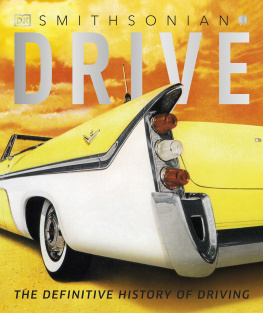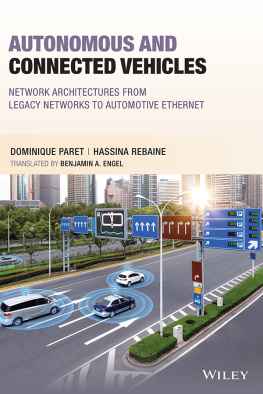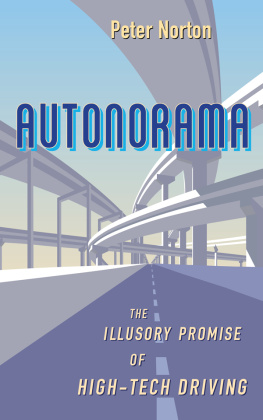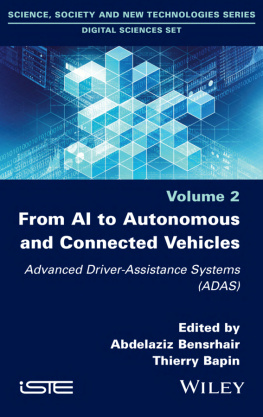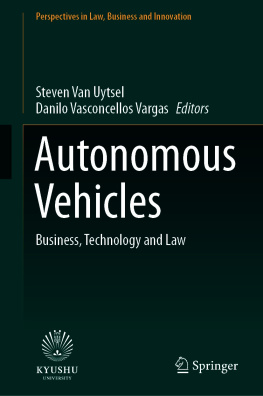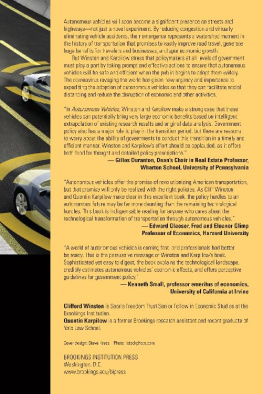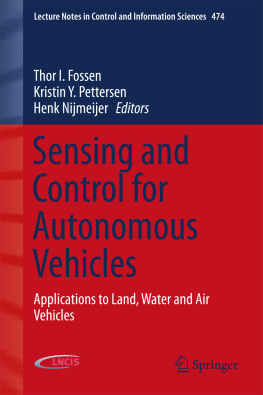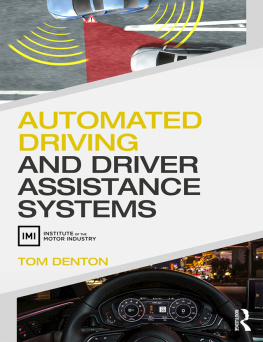Contents
Guide
Page List
Ghost
Road
BEYOND THE
DRIVERLESS CAR
ANTHONY M.
TOWNSEND

IN MEMORY OF THE UNCLE I NEVER MET
William Patrick Herrschaft,
Petty Officer Second Class, US Navy,
killed in an automobile accident,
Patuxent, Maryland,
April 4, 1961
Contents
T heres one ancient story we all share, though the details differ from tribe to tribe. It speaks of a hero or god, who rides forth on a divine relic with a mind of its own. There are the flying carpets of One Thousand and One Nights, the collection of folktales from Islams golden age. Even older Persian myths recount the feats of a great shah, Kay Kvus, who flew to China on a magical throne held aloft by four eagles. But the airspace over the Middle Kingdom was already crowded. The most ancient stories of all tell of Chinese emperors who flew through the heavens on chariots and thrones.
Other vehicular lore is more down to earth. Slavs have terrorized generations of children with bedtime stories about the evil witch Baba Yaga, who roamed the Eurasian steppe in a monstrous hut propelled by two giant chicken legs. For the Welsh it was King Morgan the Generous, teleporting about Britain in a magic chariot. In the Nordic lands they worshipped Frey, the god of nature, whose self-steering ship could fold up small enough to fit in his pocket.
For thousands of years now weve looked on with envy at our deities carefree journeys. Their enchanted artifacts embody our oldest ideas about transportation, our most ancient technological longings. Weve never waited so long for a divine invention to arrive.
But behold! At long last, we will be the first human beings to achieve these immortal powers. Much as the internal combustion engine replaced animals at the yoke more than a century ago, supercomputers are now taking our place behind the wheel. Instead of spells and sorcery, a man-made magic we call software is finally making our ancient dreams real.
This computer takeover is transforming the familiar automobile into a new breed of vehiclean automated vehicle, or AV. Our cars can already steer, stop, and park themselves with an astonishing degree of skill. But this partial automation is just the beginning of the delegation of driving duty to machines. With autopilots engaged, fully automated vehicles will soon begin rolling into our lives, first by the thousands, then by the millions, and then, around mid-century, by the billions. While we sleep, theyll haul the trash, patrol the streets, and do the other dull, dangerous, and dirty work of daily upkeep. When we wake, theyll deliver the goods we used to go out to shop for. And when we do sally forth, well step out like the wizards of yore. With muttered incantations, well summon our mounts. But instead of supernatural steeds, robotic runabouts will heed our calls.
And then... whoosh! Off well go. Just like the gods of old.

ON OCTOBER 9, 2010, artificial intelligence guru Sebastian Thrun posted a brief announcement to Googles corporate blog, revealing the search giants clandestine effort to develop a fully self-driving car. No longer content to merely organize all the worlds information, Google now aspired to orchestrate the world of transportation, too. Great things, Thrun told us, were right around the corner. Our goal is to help prevent traffic accidents, free up peoples time and reduce carbon emissions by fundamentally changing car use, he wrote. We were all too eager to believe.
Ten years passed. Private-sector funding for research on driverless systems surged tenfold, from $6 billion in 2015 to over $60 billion in 2018. AV prototypes logged millions of miles on real roads, and billions more cruising around inside virtual worldssimulations nested inside simulations like so many Russian dolls. But a funny thing happened on the way to the future. The same companies that filled our heads with daydreams of self-driving cars now say that perfecting the technology will be trickier than they thought. Few of us have seen an AV, let alone ridden in one. Most of us doubt theyll ever truly be safe. And workers of the world tremble at the prospect of a job-destroying robovehicle invasion to come.
In the meantime, our attitudes about how we get around have changed. When Google fired the opening shot of this driverless revolution, using computers to fix the shortcomings of cars seemed like a sensible idea. But today, as dealers await shipments of the first self-driving SUVs, people everywhere are looking for alternatives to owning automobiles. Were riding mass transit and using for-hire vehicles more than ever. Weve taken to electric bikes and scooters in droves. Automated vehicles are late to the party.
So perhaps weve hit this speed bump at just the right moment. The hype about high-tech cars has been laid on thick by self-driving soothsayers over the last decade. Theyve spun modern-day myths to replace the ancient ones, with predictions of a driverless future thats totally safe, traffic-free, and affordable to all. But the glitches in this meme are already starting to show. When GMs Cruise division tested AVs in San Francisco, for instance, its self-driving software sometimes failed to spot pedestrians and at other times braked suddenly after detecting phantom bicycles that werent really there.
Our current view of whats to come is just as blinkered. Thats why now is the time to raise the hood on this would-be driverless revolution. Because as those false promises are washed away, new futures will be revealed. Fantasies of highways filled with identical pod cars cruising in synchrony will fade. Visions of cities powered by computer-controlled vehicles of a thousand shapes, sizes, and speeds will take their place. Well see that moving people isnt the killer app for AVs; moving stuff is. And horror stories about the clueless choices of computer chauffeurs will give way to the far greater danger of robot-powered transportation monopolies.
As we try to overcome our mistaken beliefs about the driverless future, we wont entirely escape our superstitions. Thats because the way forward is haunted by specters both old and new. AVs will be our most intense and intimate encounter with artificial intelligence in the physical world, and well trust these mysterious new machine minds with our safety and welfare even after theyve taken our jobs. More sinister spirits will watch us from the cloud, where bots that meter everything that moves will regulate our travels far more thoroughly than any government ever has. Most ghastly of all are the millions of restless soulsthe future victims of avoidable crasheswholl torment us if we dont embrace this technology with vigor.
I call this troubled future territory the ghost road. It doesnt show up on maps. But youll find it soon enough, when youre cruising along in your computer car without a care. Youll look around and, for the first time, realize that youre now a stranger in a strange land, outnumbered and outclassed by software-steered machines.

THE GHOST ROAD is both beacon and warning. Despite delays and detours in the quest for vehicle automation, over the coming decade well finally master this technology. Computers and cars will combine, and neither will ever be the same again. The machines that result from this merger will transform how billions of people live, work, and travel in the century to come. But this is no repeat of the Motor Ages upheaval. AVs arent dumb machines that follow a prescribed path. They will use artificial intelligence to make their way through the world on their own. And like animals they must be tamed, lest they overrun our human world and subjugate us instead.


